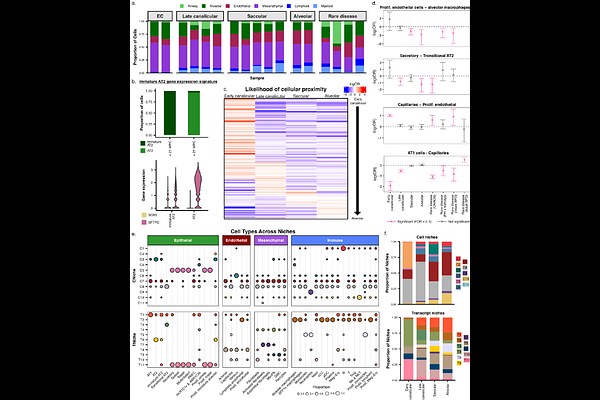A spatial transcriptomic atlas of acute neonatal lung injury across development and disease severity

A spatial transcriptomic atlas of acute neonatal lung injury across development and disease severity
Mallapragada, S.; Lyu, R.; Williams-Katek, A. L.; Fischer, B. K.; Vannan, A.; Hadad, N.; Mee, E. D.; Shirazi, S. P.; Jetter, C. S.; Negretti, N. M.; Hilgendorff, A.; Eldredge, L. C.; Deutsch, G. H.; McCarthy, D. J.; Kropski, J. A.; Sucre, J. M. S.; Banovich, N. E.
AbstractA molecular understanding of lung organogenesis requires delineation of the timing and regulation of the cellular transitions that ultimately form and support a surface capable of gas exchange. While the advent of single-cell transcriptomics has allowed for the discovery and identification of transcriptionally distinct cell populations present during lung development, the spatiotemporal dynamics of these transcriptional shifts remain undefined. With imaging-based spatial transcriptomics, we analyzed the gene expression patterns in 17 human infant lungs at varying stages of development and lung injury, creating a spatial transcriptomic atlas of ~1.2 million cells. We applied computational clustering approaches to identify shared molecular similarities among this cohort, generating hypotheses about how tissue architecture and molecular spatial relationships are coordinated during normal development and disrupted in disease. Recognizing that all preterm birth represents an injury to the developing lung, we have moved away from the conventional paradigm of classifying an infant lung as belonging to \'disease\' or \'control\' groups in favor of a linear regression approach that accounts for the routinely collected objective measures of gestational age and life span. Within this new framework, we have identified cell type patterns across these variables that would likely be overlooked when using a binary, conventional \'diseased\' vs. \'control\' comparison. Together, these data represent an open resource for the lung research community, supporting discovery-based inquiry and identification of targetable molecular mechanisms in both normal and arrested human lung development.